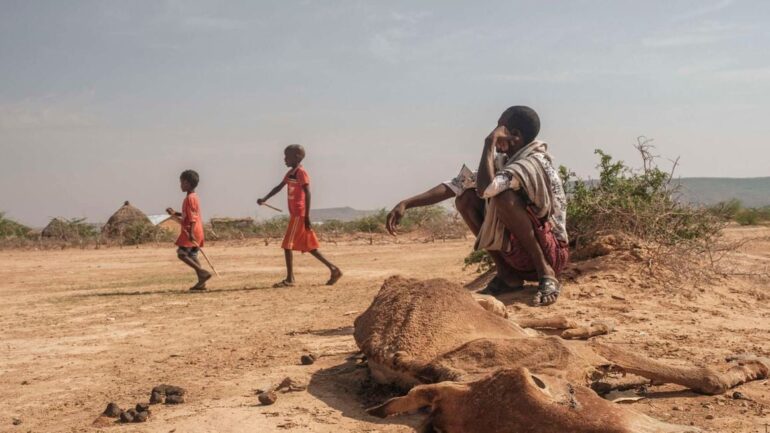The calamitous drought in the Horn of Africa looks certain to persist with a sixth consecutive failed rainy season, a regional climate monitoring body warned Wednesday, fearing worse conditions than a decade ago when some 260,000 people died in Somalia alone.
Forecasts for the 2023 March-May rainy season point “towards depressed rainfall and high temperatures,” the Intergovernmental Authority on Development Climate Prediction and Applications Centre (ICPAC) said.
The crucial March to May season typically contributes up to 60 percent of the annual total rainfall in the equatorial parts of the Greater Horn of Africa.
Humanitarian catastrophe
The outlook confirms the fears of meteorologists and aid agencies who have warned of an unprecedented humanitarian catastrophe as the longest and most severe drought sweeps the region.
“In parts of Ethiopia, Kenya, Somalia, and Uganda that have been most affected by the recent drought, this could be the 6th failed consecutive rainfall season,” ICPAC said in a statement.
The Nairobi-based ICPAC is the designated regional climate centre by the World Meteorological Organisation.
Extreme weather events
The Horn of Africa is one of the regions most vulnerable to climate change and extreme weather events are occurring with increased frequency and intensity.
Five straight failed rainy seasons have killed millions of livestock, destroyed crops, and forced more than one million people from their homes in search of food and water.
ICPAC said the looming conditions are worse than during the 2011 drought, with 23 million people in Kenya, Ethiopia and Somalia already “highly food insecure,” according to the East African bloc Igad (Intergovernmental Authority on Development) and UN’s FAO.
That year famine was declared in Somalia, and some 260,000 people — half of them children under the age of six — died of hunger, partly because the international community did not act fast enough, according to the UN.
At that time, the region had encountered two poor rainy seasons.
Internally displaced
UN chief Antonio Guterres on Wednesday said 1.3 million — 80 percent of them women and children — have been internally displaced in Somalia by the ongoing biting drought.
While famine thresholds have not been reached, Guterres said, 8.3 million people — more than half Somalia’s population — will need humanitarian assistance this year.
Igad Executive Secretary Workneh Gebeyehu called for the urgent scaling up of risk reduction measures in the Horn of Africa, warning that the situation will likely intensify.
“National governments, humanitarian and development actors must adopt a no-regret approach before it’s too late.”

